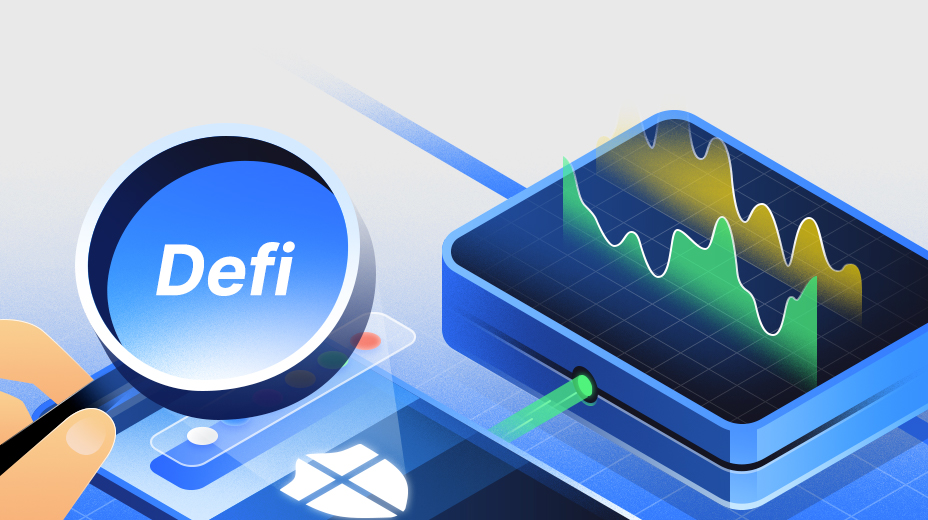カーブダオ(CRV)
このモジュールでは、ステーブルコイン取引用に設計された特殊なAMMであるCurveについて説明します。 ステーブルコインスワップの低スリッページと高流動性に最適化された自動マーケットメイキングアルゴリズムなど、Curveのユニークな機能について学びます。 DeFiエコシステムにおけるCurveの役割と、それがトレーダーに提供するメリットについて掘り下げます。

ソース: カーブ
Curveは、イーサリアムブロックチェーン上に構築された分散型取引所(DEX)であり、ユーザーは低スリッページと低手数料でステーブルコインを交換できます。 2020年8月に発売され、ステーブルコインの取引を検討しているユーザーの間で急速に人気を博しています。 このプラットフォームには、スリッページを減らし、流動性を高めるように設計された独自の自動マーケットメーカー(AMM)アルゴリズムがあります。
複数の種類のトークンをサポートする他のDEXとは異なり、Curveはステーブルコインのみに焦点を当てています。 ステーブルコインは、法定通貨または金などの商品の価値に固定されている暗号通貨です。 ステーブルコインのみをサポートすることで、Curveはより安定した予測可能な取引体験をユーザーに提供できます。 このプラットフォームは現在、USDT、USDC、DAI、TUSD、BUSD、SUSDなど、さまざまなステーブルコインをサポートしています。
CurveのAMMアルゴリズムは、ステーブルコインとステーキングコイン(stETH、rETHなど)を取引するために特別に設計されています。 プラットフォームは、複数のステーブルコインで構成される流動性プールを使用します。 ユーザーがあるステーブルコインを別のステーブルコインと交換したい場合、トランザクションは外部取引所ではなく、この流動性プール内で実行されます。 これにより、流動性プールはステーブルコインに大量の流動性を提供できるため、ユーザーはスリッページの少ないステーブルコインを取引することができます。
プラットフォームも分散化されているため、取引所を管理する中央機関はありません。 代わりに、ユーザーは自分の資金と取引を管理できるため、セキュリティと透明性の層が追加されます。 Curveはまた、イールドファーミングを通じて追加の報酬を獲得する可能性を提供します。イールドファーミングでは、暗号通貨をステーキングして、より多くのトークンや利息などの追加の報酬を獲得します。 Curveでは、ユーザーはプラットフォームの流動性プールに流動性を提供することで追加の報酬を獲得できます。 流動性の提供と引き換えに、ユーザーはCurveのネイティブトークンであるCRVを受け取り、プラットフォームガバナンスの問題に投票したり、取引所で販売したりできます。
カーブのAMMメカニズム
カーブDAO(カーブ)は、分散型ファイナンス(DeFi)エコシステムで人気のある自動マーケットメーカー(AMM)プラットフォームです。 主にさまざまな暗号通貨を取引するためのプラットフォームとして機能するUniswapとは異なり、Curveは、米ドルなどの法定通貨の価値に固定されたデジタル資産であるステーブルコイン、資産担保およびラップトークン、またはその他の特定の資産。 その結果、CurveのAMMメカニズムは、ステーブルコインを取引する際の低スリッページと低手数料に最適化されています。
カーブのAMMメカニズムは、Uniswapで使用される定数積式の修正バージョンに基づいています。 ただし、Curve では、一次関数を使用してプール内の資産の価格を決定する代わりに、定数関数マーケットメーカー (CFMM) アルゴリズムの修正バージョンを使用します。 このアルゴリズムは、より多くの資産がプールに追加されたり、プールから削除されたりするにつれて価格曲線を調整することにより、ステーブルコインの価格を安定させるように設計されています。
CurveのAMMメカニズムは、ステーブルコインの低スリッページ取引をサポートすることができます。 これは、タイトなスプレッド、低手数料、高度な流動性管理アルゴリズムの組み合わせによって実現されます。 その結果、Curveは、大きな価格下落を招くことなくステーブルコインで大規模な取引を行う必要があるトレーダーに好まれることがよくあります。
Curveは、ユーザーに他のさまざまな機能と利点も提供します。 これらには、トレーダーが大規模な取引を迅速かつ簡単に実行できる高い流動性、ユーザーフレンドリーなインターフェース、堅牢な一連の取引ツールと分析が含まれます。 さらに、Uniswapと同様に、Curveはオープンで分散型のインフラストラクチャ上に構築されているため、完全に透過的で安全で監査可能であり、集中型取引所に関連するリスクや脆弱性の影響を受けません。
ハイライト
- Curveは、イーサリアムブロックチェーン上に構築された分散型取引所(DEX)であり、ユーザーは低スリッページと低手数料でステーブルコインを交換できます。
- 法定通貨または商品の価値に固定された暗号通貨であるステーブルコインのみをサポートします。
- Curveの自動マーケットメーカー(AMM)アルゴリズムは、スリッページを減らし、流動性を高めるように設計されています。
- Curveの流動性プールは複数のステーブルコインで構成されており、ユーザーはスリッページの少ないステーブルコインを取引することができます。
- カーブは分散化されているため、取引所を管理する中央当局はなく、ユーザーは自分の資金と取引を管理できます。
- Curveは、イールドファーミングを通じて追加の報酬を獲得する可能性を提供し、ユーザーは、プラットフォームガバナンスの問題への投票に使用したり、取引所で販売したりできるCRVと引き換えに、プラットフォームの流動性プールに流動性を提供することで追加の報酬を獲得できます。
- CurveのAMMメカニズムは、定数関数マーケットメーカー(CFMM)アルゴリズムの修正版に基づいており、より多くの資産がプールに追加されたり削除されたりするときに価格曲線を調整することにより、ステーブルコインの価格を安定させるように設計されています。
- CurveのAMMメカニズムは、タイトなスプレッド、低手数料、高度な流動性管理アルゴリズムの組み合わせにより、ステーブルコインの低スリッページ取引をサポートします。
- Curveは、高い流動性、ユーザーフレンドリーなインターフェース、および堅牢な一連の取引ツールと分析を提供します。
- Curveはオープンで分散型のインフラストラクチャ上に構築されているため、完全に透過的で安全で監査可能であり、集中型取引所に関連するリスクや脆弱性の影響を受けません。





